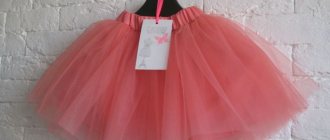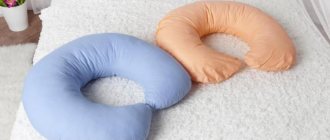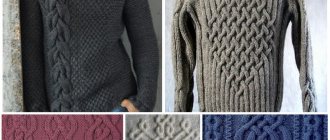Angelina
The kindergarten holds quarterly matinees. My daughter loves fluffy dresses with a tulle skirt - we have several of them. Any fold on tulle is very noticeable, so I know how to iron tulle correctly. I'll tell you.
Photo of what tulle looks like. This is a transparent lush fabric with a fine mesh. Festive skirts, dresses, veils are made from it...
Ironing tulle correctly
Tulle - what kind of fabric is it: a thin mesh, capricious and requires a gentle attitude. What is it used for: for sewing festive clothes, for example, wedding dresses, veils, fluffy skirts, petticoats.
Smoothing tulle is not easy: you need knowledge so as not to burn the capricious fabric. For example, a wedding dress is 80% tulle. How to iron a wedding dress at home or other tulle items without damaging them:
| Method 1. Iron Is it possible to iron with an iron - yes, if you set the “special mode”. Ironing should be done through gauze or a thin cloth soaked in water. If there is a lot of decor on things - beads, sequins, rhinestones, then ironing them can damage them | |
| Method 2. Steam generator How to iron a veil at home, avoiding wrinkles - steam it with a steam generator. Steam the material vertically:
| |
| Method 3. Hot steam in the bathroom You can smooth out tulle in the bathroom:
If you need to smooth out a small area of tulle, hold it over a hot kettle, or turn on a hot water tap. | |
| Method 4. Water and hairdryer A spray bottle of water and a hairdryer will smooth out uneven spots on an elegant tulle dress:
|
Using a hair dryer
This is another interesting way to smooth out a tulle element and get rid of folds and wrinkles on the surface of the fabric. Surely everyone has a hairdryer at home. Here is the method itself that will help smooth out the necessary wardrobe item:
- Hang the product on a hanger.
- Take a hairdryer and a spray bottle with plain tap water.
- Spray the tulle a little and dry it with a hairdryer; if you see that a crease forms during the drying process, spray it again.
The flow of hot air from the hairdryer will act in a similar way to a steamer. To ensure that your product does not lose its appearance and does not deteriorate during drying with a hairdryer, select medium power on the device.
Tulle is one of the delicate fabrics that require special care. If you adhere to the basic principles of proper washing of this kind of item, then you will not have to suffer from wrinkles formed on the surface. However, if an unpleasant crease does appear, you can easily deal with it using one of the above methods.
Iron a tulle veil
Tulle is a light, airy fabric with a rigid structure that holds its shape very well. And if wrinkles have formed on it, it’s not easy to get rid of them, because, for example, you can burn a veil with an iron.
How to smooth out wrinkles on a veil:
- Gently wash the veil by hand . You can soak it in water with fabric softener for 15 minutes.
- Dry in a vertical position . Do not squeeze - let the water drain on its own.
- Make sure the soleplate of the iron is clean . Otherwise the veil will get dirty.
- Turn on the equipment to the minimum temperature . This is the “synthetic” mode.
- Straighten the veil. Lay the item out on an ironing board and place a gauze cloth on top. Iron each section in turn.
After ironing, hang the veil vertically so that the fabric does not wrinkle.. Photo: vipfata.com.ua
How to smooth out tulle at home from wrinkles and creases (5 methods)
Using an iron
This is the most famous and accessible method to everyone. The only pity is that it requires a lot of time and effort, and an iron and ironing board are not always at hand, for example, when traveling. How to iron tulle correctly?
In order not to burn or spoil this lightweight mesh fabric, you need to select the ironing mode for delicate fabrics (if there is no such mode, set the lowest temperature) and iron the product through a thin cloth or gauze. If necessary, it is okay to gradually increase the temperature, but remember that high temperatures will burn the fabric.
The soleplate of the iron must be clean, otherwise you risk ruining the material. The steam function cannot be used when ironing this material. If the clothes have decorative elements (beads, beads, rhinestones), it is better to iron the area of the fabric with them through a terry towel. The sleeves of the dress should be ironed using a special stand, which is usually included with the ironing board.
Using a hairdryer and spray bottle
These two items simulate the operation of a steamer if you don't have one. The material must first be moistened with a spray bottle, and then blown on it with a hot hairdryer so that the folds straighten out. You need to set the hairdryer to the highest temperature setting. An accessible and economical way, it will come in handy on the road or before a performance, when you need to quickly put your outfit in order and have nothing at hand.
Using a hot bath or shower
This method was familiar to our grandmothers. It is quite lazy and simple: you need to fill the bathtub with hot water and hang the tulle product over the bathtub for several hours. With the help of steam in the room, the material will gradually smooth out on its own, without any extra effort on your part.
Using a hot kettle
This method is suitable if you do not need to iron the entire dress, but only smooth out wrinkles in a small area. Just hold the problem area over the steam of a boiling kettle to loosen it. This method will be a great help when traveling if you don’t have an iron, but there is an electric kettle nearby.
Using a steam generator
This is the least modern method in which you will spend the least time and effort. You just need to hang the outfit on a hanger and iron it on the weight with a steamer several times from the top of the item to the bottom. To iron the sleeves, use a small attachment, after placing a towel under them and a thin cloth on them. For tulle curtains, this method is ideal because you can iron even more damp curtains hanging on the eaves.
Other ironing options
Of course, you don’t have to bother yourself with home methods of ironing capricious tulle, but simply take it to the nearest dry cleaner. But keep in mind that it may get wrinkled again upon delivery. And you most likely don’t need the extra financial costs.
Caring for tulle
- Handwash only. Squeezing a little. We decided to wash it in a machine - hand wash mode, at low speeds and at a temperature not higher than 40 ° C.
- Tumble dry . On the "drying" mode. The operation of this mode is based on the principle of a steam generator.
- Let dry in a straightened state . It is better to hang them on hangers so that the room is well ventilated.
- Rinse in vinegar . If a colored tulle dress has lost its former brightness, rinse it in vinegar water (for 10 liters of water - 2 tablespoons of vinegar).
Wash tulle at a water temperature of no more than 40 °C.
Story
The history of tulle is not as long and mysterious as, say, noble satin or silk, but is imbued with a romantic mood. The year 1804 was marked by the invention of the lace machine: it was assembled by the Englishman John Hadcoat, after which the machine was taken to Calais (Northern France) and tested in operation.
The Heathcoat material creation technique received the name of its founder and became a real breakthrough in weaving at that time. The machine parts were made of thin sheets of metal and made it possible to create elegant cuts of fabric. To work on such a machine, the master had to thoroughly “pump up” his skills in manual lace making.
And for the first time, a product made from tulle was tried on by the monarch’s bride, especially for whom the fabric was made. The girl wanted a piece of jewelry that would hide her facial features without limiting her field of vision. The city of Tulle, where the wedding attribute was created, borrowed the name of the material (it is also called eurotulle).
The first tulle mesh was invented in France in the city of Tulle. When, by order of the monarch's bride, they made a veil over her face. Thanks to this accessory, the young lady could see everything that was happening around her, beautifully hiding her facial features from strangers.
Soon after the celebration, the fabric went into mass production and became known in many countries. Today, tulle is used for sewing wedding dresses, summer skirts and sundresses, ballet tutus and in the manufacture of decorative jewelry (hairpins, brooches, handbags, etc.). See the photo for what tulle fabric and things made from it look like.
Remember
- Check the iron. Before ironing tulle, make sure that there is no carbon deposits on the sole of the iron. Otherwise you will ruin the outfit.
- Place the item on gauze or cloth. During ironing, place the tulle on a thick fabric/gauze so as not to spoil the thin material.
- Protect the decor. Cover beads, rhinestones, and sequins with a towel so as not to spoil the decorative elements.
- Start ironing from the front. Iron the dress first from the front , then from the back.
- Tumble dry. If there is a “drying” function, it will not harm. There is no such function - dry in a vertical, straightened state in a ventilated area.
How to iron and wash a tulle skirt: video
Bleaching things
Airy tulle products can lose their snow-white appearance after some time. In such a situation, bleaching is carried out, choosing oxygen-containing varieties that do not deform the delicate fabric.
Most often, liquid Vanish Oxi Action is recommended, which effectively removes a variety of contaminants.
For items that are not machine washable, soaking is practiced.
Pour warm (30˚C) water into an enamel basin and dissolve the bleach. It is calculated that you need to take 50 ml of Vanish per 2 liters of water. Immerse the product completely and leave for 6 hours. If there are noticeable stains, first apply a small amount of bleach to this area of the fabric, leaving for 5 minutes. The bleached item is thoroughly washed with clean water.
ARTICLE FOR YOU
How to properly wash knitwear
If machine washing is carried out, then add 100 ml of Vanish in accordance with the instructions.
Fabric properties
Tulle has characteristic properties, both positive and negative.
- Light and airy fabric can be easily formed into pleats, flounces and full skirts.
- Single-layer tulle items allow air to pass through well.
- The fabric is resistant to rubbing, but it is very easy to tear it with a sharp object.
- The durable, rich color of synthetic fabric keeps things bright for a long time.
- Tulle is soft, medium and hard and practically does not wrinkle and, if necessary, the folds on it can be easily straightened.
- Water and dirt are not retained in the fibers of the mesh fabric.
- Affordable price.
- The mesh does not require special care and is easy to wash.
Minuses
- Multi-layer tulle items are not able to allow air to pass through and a greenhouse effect is created underneath them.
- A thin mesh skirt can easily be torn by catching its hem with a heel. And such damage will not go unnoticed.
At first glance, it may seem that aesthetic tulle is absolutely not practical in everyday life and for constant wear. In fact, it has a lot of advantages, although there are also some disadvantages.
- Tulle is very elastic. If you crumple it in your hand, when squeezed, the canvas will immediately return to its original shape. The exception is soft fabric obtained by weaving thin nylon threads. It is better to iron such materials before putting them on;
- High wear resistance. The manufacture of fabric from synthetic fibers provides excellent strength and resistance to mechanical stress. A tulle skirt will last you for several years even with intensive wear;
- Once wet, the tulle skirt retains its shape and volume. Although we can talk about getting this material wet conditionally, since the threads do not absorb moisture and therefore dry very quickly;
- If you are going to make a multi-layer tulle skirt, it is worth considering that the item will not allow air to pass through well and will create a “greenhouse” effect. Lining in this case is not recommended;
- Low cost. The affordability of tulle makes it a leader in the range of fabrics for wedding dresses. Even if you need to sew a very fluffy and long dress, buying tulle will not hit your budget.
Among the disadvantages is intolerance to high temperatures. Do not dry a tulle skirt near a heater: the clothing may become deformed and catch fire. The second drawback is the tendency to electrify, which can be easily eliminated using a special antistatic spray.
Washing in a washing machine
Modern technology makes life at home much easier. Less time is spent on laundry, and more time is spent on family. But is it possible to wash a wedding dress from dirt in an automatic washing machine?
Machine processing will allow you to return your outfit to its original appearance if you take into account a number of tips and carry out the procedure correctly.
So, how to wash automatically:
- Free from removable parts.
- Place in a special case so that the material has less contact with the walls of the drum.
- Enable delicate or manual mode.
- Set the temperature to no more than 30°C.
- Add detergent to the powder receptacle. The amount depends on the degree of contamination, look at the gel label.
- Disable the spin function.
The washing time depends on the selected mode. Without drying and spinning, it takes about 50 minutes.











